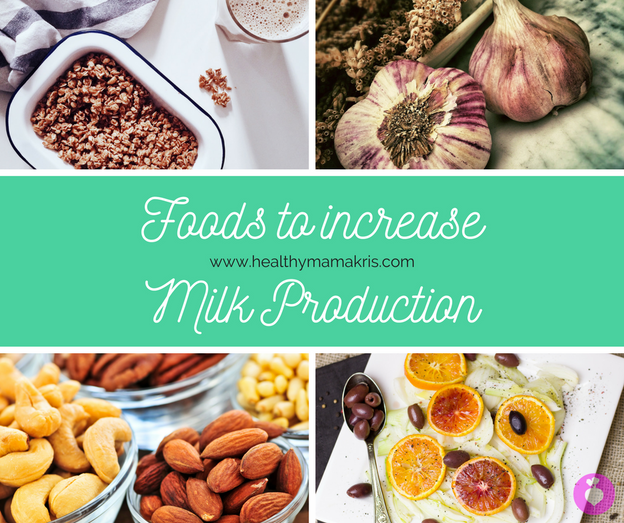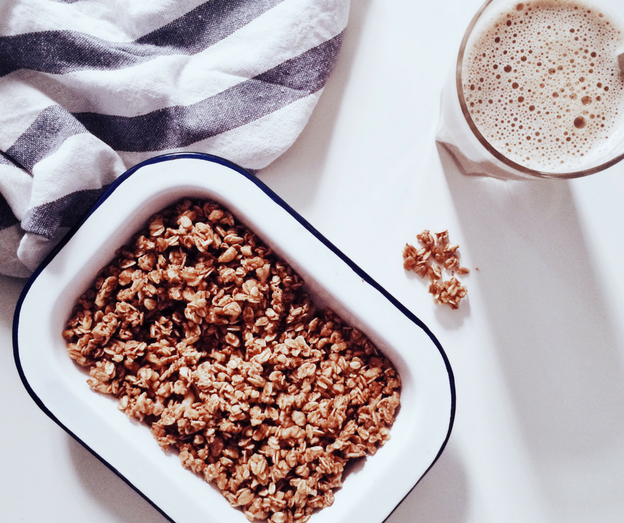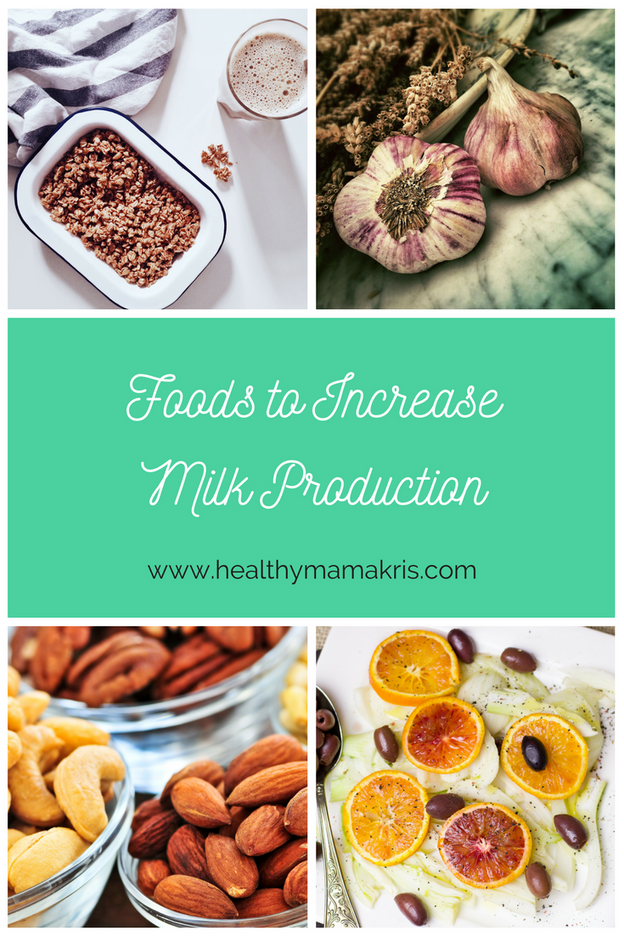
Most nursing moms go through it at some point: the paralyzing fear that their breast milk production has tanked. Thankfully, for most moms, this isn’t the case. Breast milk production is regulated by hormones, in the beginning, and then it becomes a supply-and-demand process. So as long as you are breastfeeding your baby on-demand, regularly as is age appropriate, your supply should keep up. However, there are some fairly rare instances when your supply might drop, either gradually or unexpectedly.
Kelly Mom explains some of the possible causes of a true lowered milk supply:
-
Supplementing. Nursing is a supply & demand process. Milk is produced as your baby nurses, and the amount that she nurses lets your body know how much milk is required. Every bottle (of formula, juice or water) that your baby gets means that your body gets the signal to produce that much less milk.
-
Bottle preference. A bottle requires a different type of sucking than nursing, and it is easier for your baby to extract milk from a bottle. As a result, giving a bottle can either cause your baby to have problems sucking properly at the breast, or can result in baby preferring the constant faster flow of the bottle.
-
Pacifiers. Pacifiers can affect baby’s latch. They can also significantly reduce the amount of time your baby spends at the breast, which may cause your milk supply to drop.
-
Nipple shields can be a useful tool in some cases, but they can also reduce the stimulation to your nipple or interfere with milk transfer, which can interfere with the supply-demand cycle.
-
Scheduled feedings interfere with the supply & demand cycle of milk production and can lead to a reduced supply, sometimes several months later rather than immediately. Nurse your baby whenever she is hungry.
-
Sleepy baby. For the first few weeks, some babies are very sleepy and only ask to nurse infrequently and for short periods. Until baby wakes up and begins to breastfeed well, nurse baby at least every two hours during the day and at least every 4 hours at night to establish your milk supply.
-
Cutting short the length of nursings. Stopping a feeding before your baby ends the feeding herself can interfere with the supply-demand cycle. Also, your milk increases in fat content later into a feeding, which helps baby gain weight and last longer between feedings.
-
Offering only one breast per feeding. This is fine if your milk supply is well-established and your baby is gaining weight well. If you’re trying to increase your milk supply, let baby finish the first side, then offer the second side.
-
Health or anatomical problems with baby (including, jaundice, tongue-tie, etc.) can prevent baby from removing milk adequately from the breast, thus decreasing milk supply.
-
Mom’s health (uncontrolled anemia or hypothyroidism, retained placenta, postpartum hemorrhage…), previous breast surgery/injury, hormonal problems (e.g. PCOS), anatomical problems, medications she is taking (hormonal birth control, sudafed…), or smoking also have the potential to affect milk supply
[source]
If any of these apply to you, you might be suffering from low milk supply, and might benefit from techniques and foods that could increase your milk supply.
If you are worried about your milk supply, please contact an IBCLC Lactation Consultant for one-on-one help.
Adoptive moms may benefit from galactagogues when attempting to force lactation, or when a mom is re-establishing lactation after a break. Another reason moms might want to increase their supply is when they are preparing to go back to work, and therefore need to pump and store larger quantities of milk for their baby. Whatever the case may be, the best way to increase your supply, is always manually- allowing baby to nurse more (sometimes even going on a ‘nursing vacation’ is recommended), either more frequently, longer or on more than one side; and pumping more to increase output. But sometimes our stressed out mama bodies need a little push to increase that supply. That’s where galactagogues come in.
What are galactagogues?
Galactagogue is defined as a food or drug that promotes or increases the flow of a mother’s milk. Simple as that. Some of these foods and herbs are more common and well-known, like oatmeal and fenugreek, and some are less common, like goat’s rue and brewer’s yeast. Some women respond better to some than others, so it’s important to experiment and decide which ones work best for you. Though these herbs and foods have been used for hundreds of years, there aren’t always adequate studies on them. Some studies claim these foods are only beneficial as self-care tools for mothers, and others show a better correlation– so be sure to carefully consider and discuss with your doctor or midwife whether you might consider trying various galactagogues.
Here are my favorite milk-boosters:

Herbal Galactagogues
These can be taken as pills, tinctures or in Mother’s Milk teas, as well as added to lactation cookies and other edible treats.
Fenugreek
This is one of the more common and widely used herbal galactagogues, and it is readily found in Mother’s Milk teas and tinctures. Use with caution, however if you are prone to low blood sugar (it can further lower it). It can also cause gas to mom or baby in some cases.
Blessed Thistle
Blessed Thistle is a digestive bitter as well as a powerful milk-booster. It has also been shown beneficial in instances of postpartum depression.
Goat’s Rue
This herb directly effects the mammary glands, making it extremely helpful for women who have production issues from the start. It can also lower blood sugar when taken in large doses.
Moringa
Moringa (also known as Mulunggay) is a common herb in Ayurvedic medicine due to it’s immune and health-promoting properties. It is also well known as a milk booster.
Red Raspberry Leaf
You might remember this one from pregnancy– not only is it a uterine tonic, but it can also help overall hormonal balance and increasing milk production.
Alfalfa
Alfalfa is a nutrient-rich herb that also helps to increase milk production. Note that it is not recommended for use when taking blood-thinning medications due to its high levels of Vitamin K.

Lactogenic foods
Oatmeal
This might just be the most common galactagogue out there. Oats have long been used to increase milk production (they’re a main ingredient in my boobie balls recipe) and they’re inexpensive and easy to prepare, which makes them a great option for many moms.
Brewer’s Yeast
Yes- the same type of yeast used in wine and beer production is also a highly nutrient-dense (especially in B-vitamins) lactogenic food. I like to add a tablespoon to most meals (it has a slightly cheesy taste, which some love and some do not).
Flax Seed
Flax has long been used as a galactaogue due to it’s effects on female hormones. Note that flax needs to be ground to be absorbed- it’s easy to add to a smoothie (you’ll get a boost of healthy fats and fiber, too) or sprinkle on top of your oats!
Fennel
This licorice-like seed is well known to increase breastmilk production as well as helps to reduce gastrointestional issues. It can be added to lactation balls or cookies, soups or stews.
Garlic
Garlic is not only a tasty superfood for your immune system, it has also been shown to encourage babies to stay on the breast longer and suck more vigorously. However, it can also cause gas in babies in large amounts.
Almonds
These healthy nuts have been shown to increase the quality milk supply; in fact, adding extra fats overall can produce richer, fattier milk, aiding in weight gain and essential fatty acid balance in babies.
Do you have any favorite milk-boosting foods? I’d love to hear in the comments below!

Most sources linked. Additional sources:
https://clinicaltrials.gov/ct2/show/NCT00851591
http://www.cjmrp.com/articles/volume-2-2003/galactagogue-herbs-a-qualitative-study-and-review
Leave a Reply Cancel reply
5-day series: how to get started with meal prep for easier meals
free email series
©️ 2025 Kristin Dovbniak for Healthy Mama Kris | Template by Maya Palmer Designs | Privacy Policy | Terms
